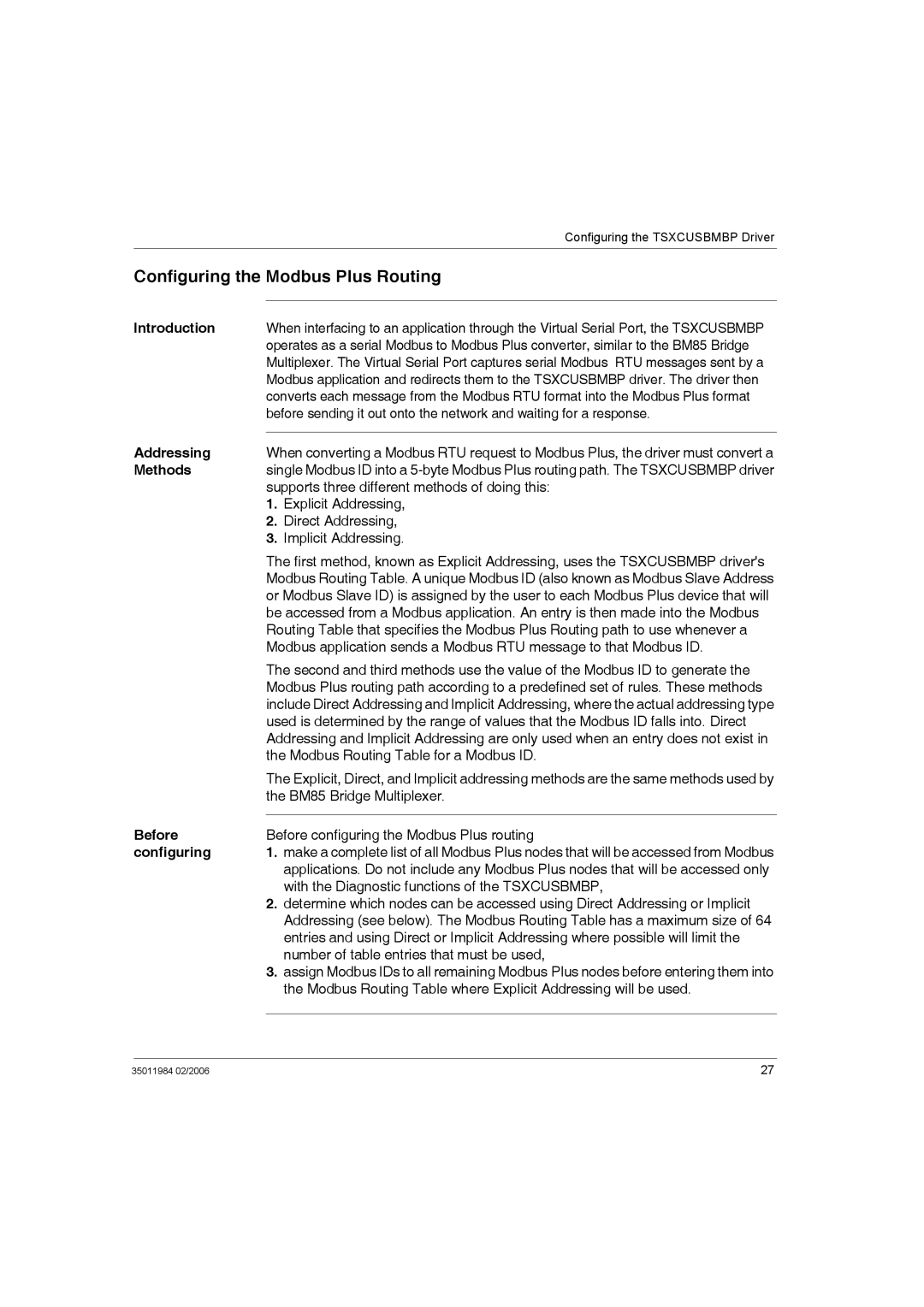
Configuring the TSXCUSBMBP Driver
Configuring the Modbus Plus Routing
Introduction | When interfacing to an application through the Virtual Serial Port, the TSXCUSBMBP |
| operates as a serial Modbus to Modbus Plus converter, similar to the BM85 Bridge |
| Multiplexer. The Virtual Serial Port captures serial Modbus RTU messages sent by a |
| Modbus application and redirects them to the TSXCUSBMBP driver. The driver then |
| converts each message from the Modbus RTU format into the Modbus Plus format |
| before sending it out onto the network and waiting for a response. |
Addressing |
|
When converting a Modbus RTU request to Modbus Plus, the driver must convert a | |
Methods | single Modbus ID into a |
| supports three different methods of doing this: |
| 1. Explicit Addressing, |
| 2. Direct Addressing, |
| 3. Implicit Addressing. |
| The first method, known as Explicit Addressing, uses the TSXCUSBMBP driver's |
| Modbus Routing Table. A unique Modbus ID (also known as Modbus Slave Address |
| or Modbus Slave ID) is assigned by the user to each Modbus Plus device that will |
| be accessed from a Modbus application. An entry is then made into the Modbus |
| Routing Table that specifies the Modbus Plus Routing path to use whenever a |
| Modbus application sends a Modbus RTU message to that Modbus ID. |
| The second and third methods use the value of the Modbus ID to generate the |
| Modbus Plus routing path according to a predefined set of rules. These methods |
| include Direct Addressing and Implicit Addressing, where the actual addressing type |
| used is determined by the range of values that the Modbus ID falls into. Direct |
| Addressing and Implicit Addressing are only used when an entry does not exist in |
| the Modbus Routing Table for a Modbus ID. |
| The Explicit, Direct, and Implicit addressing methods are the same methods used by |
| the BM85 Bridge Multiplexer. |
Before |
|
Before configuring the Modbus Plus routing | |
configuring | 1. make a complete list of all Modbus Plus nodes that will be accessed from Modbus |
| applications. Do not include any Modbus Plus nodes that will be accessed only |
| with the Diagnostic functions of the TSXCUSBMBP, |
| 2. determine which nodes can be accessed using Direct Addressing or Implicit |
| Addressing (see below). The Modbus Routing Table has a maximum size of 64 |
| entries and using Direct or Implicit Addressing where possible will limit the |
| number of table entries that must be used, |
| 3. assign Modbus IDs to all remaining Modbus Plus nodes before entering them into |
| the Modbus Routing Table where Explicit Addressing will be used. |
|
|
35011984 02/2006 | 27 |
